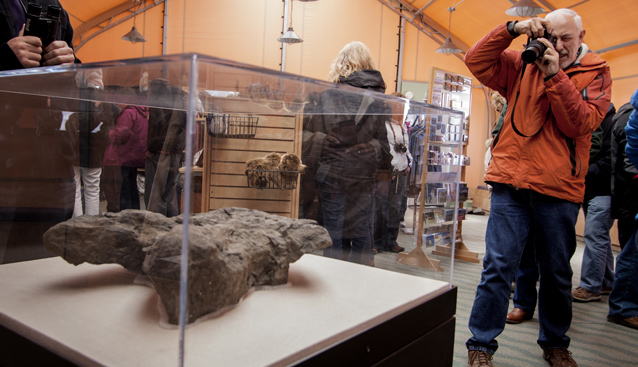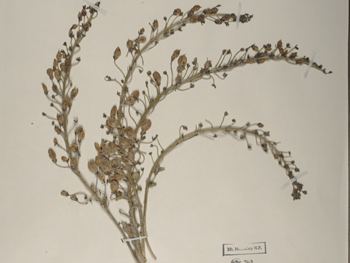
NPS Photo / Charlotte Bodak
Preservation of prehistoric and historic objects and places is important for the education, inspiration, and enjoyment of all. They forge connections between the present and past. The National Park Service cares for some of the largest and most diverse natural and cultural history collections in the world. It also keeps records and lists of our most treasured historic places.
Denali's Museum Collections includes over 782,000 items with almost 766,000 constituted as cultural resources. This includes journals, photographs, letters, and personal objects associated with people who have lived and worked at the park.
What is in Denali's Museum Collection?
The park only houses a fraction of the full museum collection. Some collections are on loan to other institutions for research or display. In total, there are eight disciplines that fall into two main collections.

Cultural Resources
- Archeology: The material remains of past human life and activities in Denali. This includes lithic (stone) tools dating back 10,000 years before present (BP) and mining and early homesteading artifacts.
- Ethnology: Currently, there is one object of this type—an Athabaskan folded birch bark basket.
- History: Includes non-archeological material objects of the non-native cultures at Denali. The collection includes Adolph Murie’s camera, the pen used by Woodrow Wilson in 1917 to sign the act creating Mount McKinley National Park, crampons from the Sourdough Expedition, and many other items.
- Art: Original artwork includes framed oil paintings by Carl R. Saxild and George “Fred” Mason.
- Archives: Photos and writings help tell Denali’s stories about people and events. There are more than 6,000 black and white photos and 218 linear feet of documents.

Natural History
- Geology: Rock and mineral samples from the park tell Denali’s stories over eons.
- Biology: Plant and animal specimens document the diversity of life within park boundaries. This includes over 8,000 herbarium specimens (vascular plants and bryophytes), 700 insect specimens and 100 animal study skins.
- Paleontology: Fossil remains include dinosaur tracks, prehistoric bison skulls, fossil impressions of leaves, and many others.

2015 Highlights
The family of the late Richard J. Stenmark, former Wonder Lake District Ranger, donated his oil painting depicting fall colors, the mountain, and wildlife. It is titled “Denali—the Great One—in fall color”. Mr. Stenmark’s first wife, Blythe Stenmark and her daughter brought the painting to the park and shared the history of their time in the park.

Digitization of museum property continues through a partnership with University of Alaska Museum of the North’s Herbarium. They have digitized to date over 800 specimens. The images are attached to the catalog record in the database. Denali’s Botany page will also share the images.
Last updated: September 14, 2017
